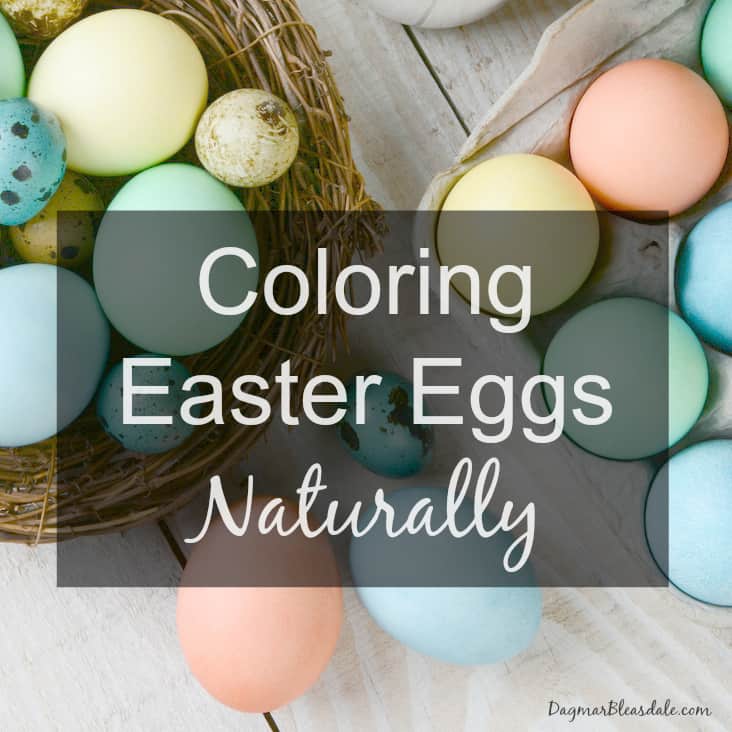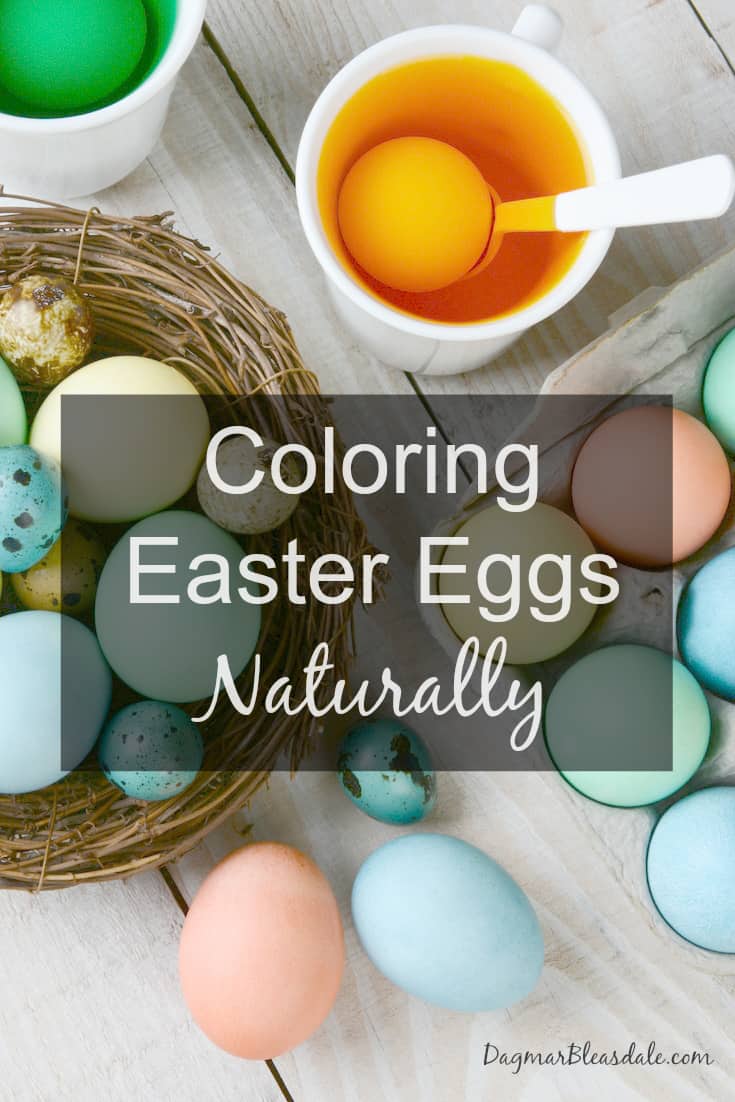Easter is coming up soon! Coloring Easter eggs naturally is a lot of fun and results in beautiful, pastel colors. Have you ever tired it? I’ll also teach you how to make easy, edible alien eggs in this post. The kids will love these!

Coloring Easter Eggs Naturally
Do you wonder how to dye Easter eggs naturally and avoid those unhealthy food colors?
Spring is here, and I’m excited to decorate and get ready for Easter although it will be very different this year. There might still not be any Easter egg hunts because of the virus, many of us won’t get together with family or friends.
But we’ll make the best of it, right?
Which brings me to coloring Easter eggs…
I cringe at the sight of bright food dyes probably more than most people because I grew up in Germany without them.
You won’t find much food coloring in Germany — I think they don’t allow it in food.
Food dyes not only make food look unnaturally and unnecessarily colorful, they are plain unhealthy.
Food dyes have been linked to cancer, and hyperactivity, plus more and more kids are allergic to food colors.
I try to not buy anything with food coloring, and I was the mom who scraped off the blue frosting from the birthday cake when my son went to parties when he was little.
He is old enough now that he is really good about staying away from food coloring himself – now he gets rid of the colorful frosting on cakes himself.
There’s simply no need for food dyes. They don’t enhance the flavor of food, and they are chemicals I don’t want in my son’s body.
So I like the idea of coloring Easter eggs with natural dyes you can find in your kitchen.
It’s an easy and fun project, and I love the pale colors it creates much better than the screeching ones from unhealthy food dyes.

Coloring Easter Eggs Naturally Tutorial
Supplies You’ll Need:
- white eggs (the colors will be obviously different if you use brown eggs)
- white vinegar
- salt
- several glass jars or bowls
- a large pot
- large spoon
- strainer
- Red-cabbage dye: 4 cups chopped cabbage
- Turmeric dye: 3 tablespoons turmeric
- Onion-skin dye: 4 cups onion skins (skins of 12 onions)
- Beet dye: 4 cups chopped beets
- Coffee dye: 1 quart strong black coffee
Colors:
- Light Blue: Soak eggs in room-temperature purple cabbage solution, 30 minutes.
- Dark Blue: Soak eggs in room-temperature cabbage solution overnight.
- Pale Yellow: Soak eggs in room-temperature turmeric solution, 30 minutes.
- Orange: Soak eggs in room-temperature onion-skin or paprika spice solution, 30 minutes.
- Light Pink: Soak eggs in room-temperature beet solution, 30 minutes.
- Light Brown: Soak eggs in room-temperature black coffee, 30 minutes.
- Lavender: Soak eggs in room-temperature beet solution, 30 minutes. Follow with cabbage solution, 30 seconds.
Tutorial for Coloring Easter Eggs Naturally
This tutorial is for the cold-dipping method where the eggs and the ingredients for the dye are boiled separately.
Boil a dozen eggs for 10+ minutes to make hard-boiled eggs. Make a few extra just in case some crack. (If they do, just make alien eggs with them, which are described below!)
Using a metal spoon, lower cooled hard-boiled eggs into a bowl of cooled dye, and let them soak for as little as 5 seconds or as long as overnight, depending on the color you desire.
Remove eggs with spoon, pat dry with paper towels, and let dry on a wire rack.
You will do the same thing for every colors:
- Chop up 4 cups of the ingredients or add several teaspoons of the spice
- Add two cups of water and a tablespoon of salt to a pot and let the mixture boil for ten minutes
- Strain the dye, put it into a glass container, add a tablespoon of vinegar, and then add the egg
Have fun with the design of the eggs. If you mark them with wax, that part won’t get colored.
You can also put a rubber band around the egg before lowering it into the dye, which will leave lines.
If you think these colors aren’t exciting enough, you could also add little stickers to the eggs.
Bonus Idea: Make Alien Eggs With Edible Food Colors
I remembered seeing an “alien” egg on Pinterest and tried making one.
Since the colors are more subtle compared to conventional food dyes, the results are not as stunning, but you can eat them without worrying about food coloring. My son loved how they turned out!
How to make alien eggs for Easter:
Gently crack the shell of a hard-boiled egg by hitting it on the table all around, and then dye it.
A small amount of dye will make it through the shell and get deposited on the egg white.
Since the dyes we are using according to my instructions above are natural, the alien egg is even edible.
Have fun coloring Easter eggs naturally this year!
It’s healthier, plus you’ll avoid dumping all that fake food dye down the drain, so our environment is saying a big thank you.
In my opinion, natural dyes for Easter eggs from fresh vegetables and spices are so much prettier than store-bought, fake colors.
Have you ever colored Easter eggs with natural dyes?
Pin this for later!
You would also enjoy these Easter and spring posts:
Thrifty Easter Decor and Tablescape Ideas
Easter and Spring Decorating Ideas For the DIY Challenged
DIY Succulent Garden in an Upcycled Egg Carton
Amazing She Shed Kits You Can Buy Online






